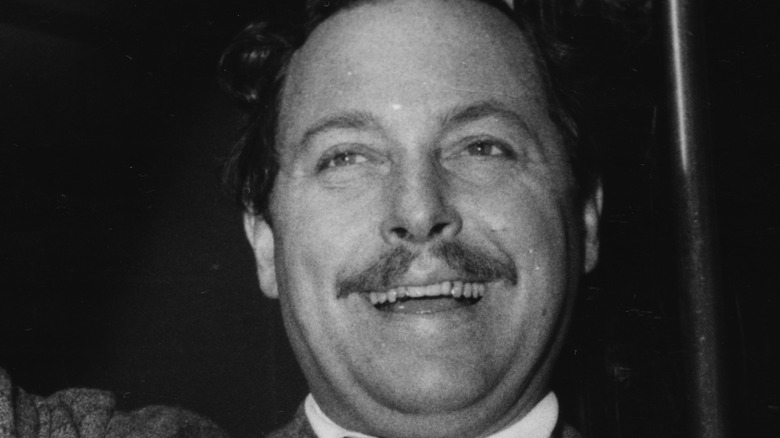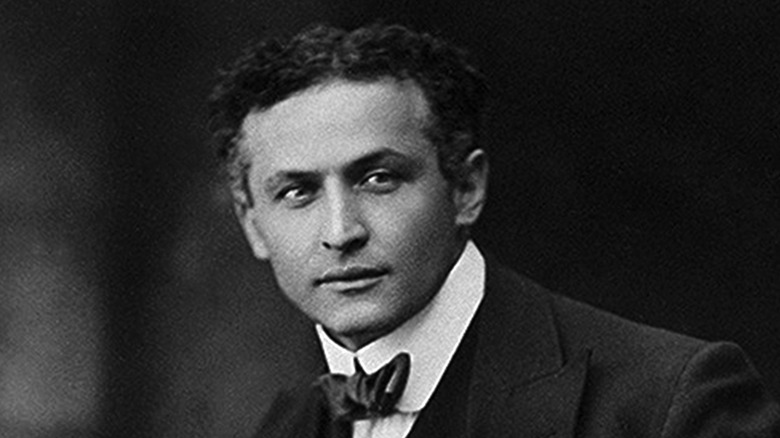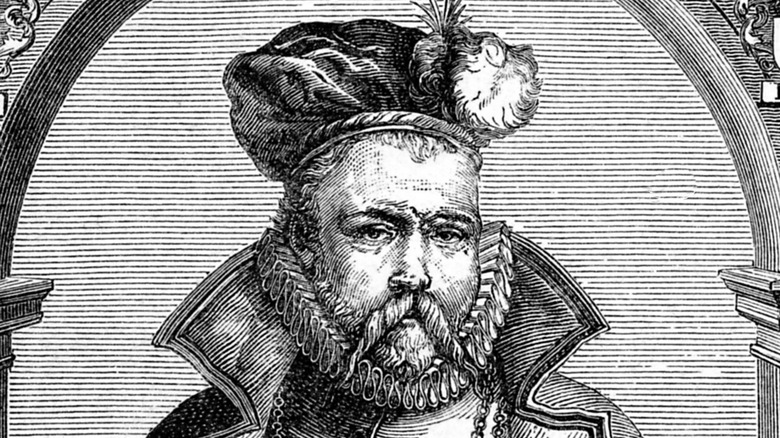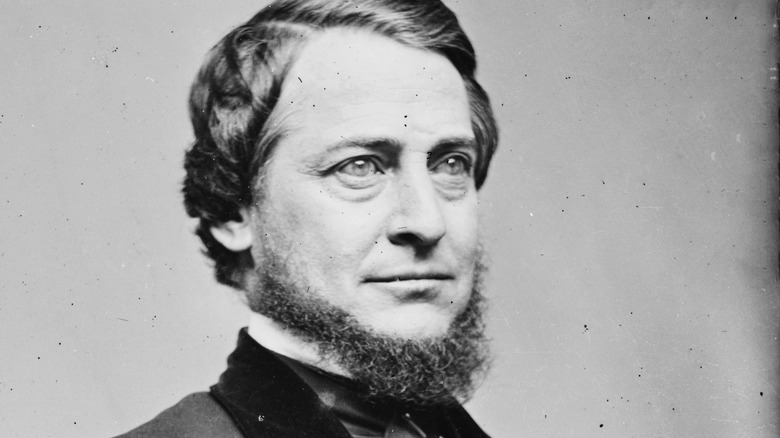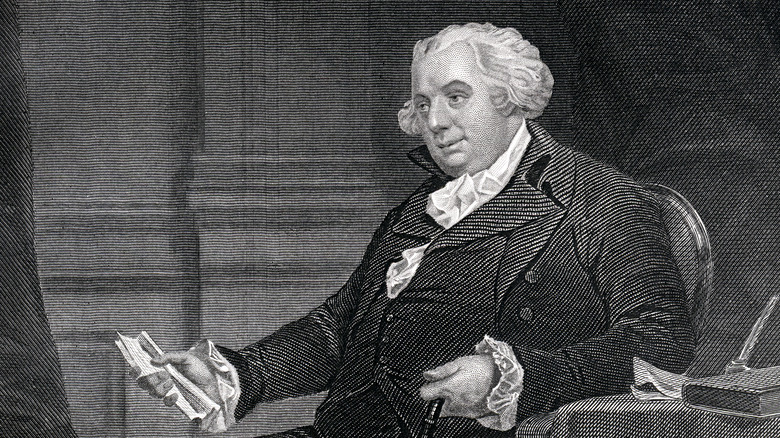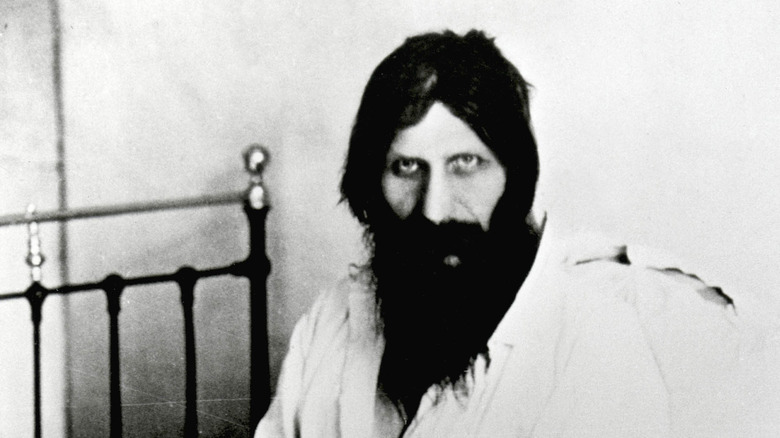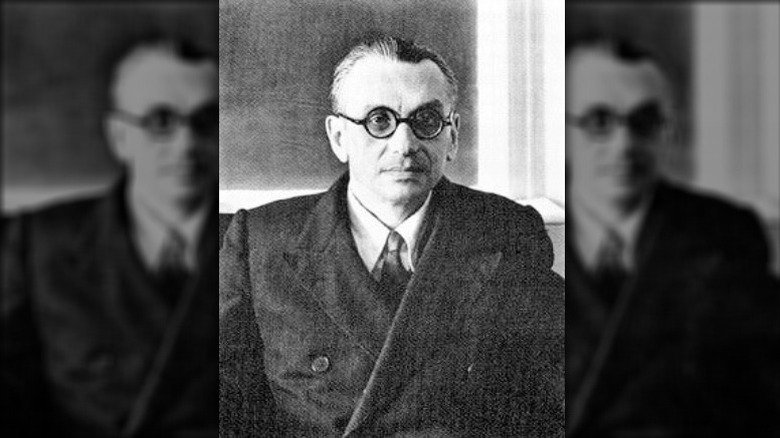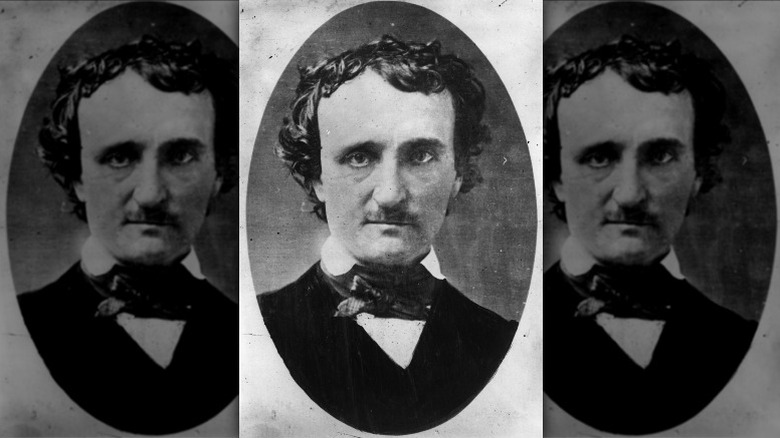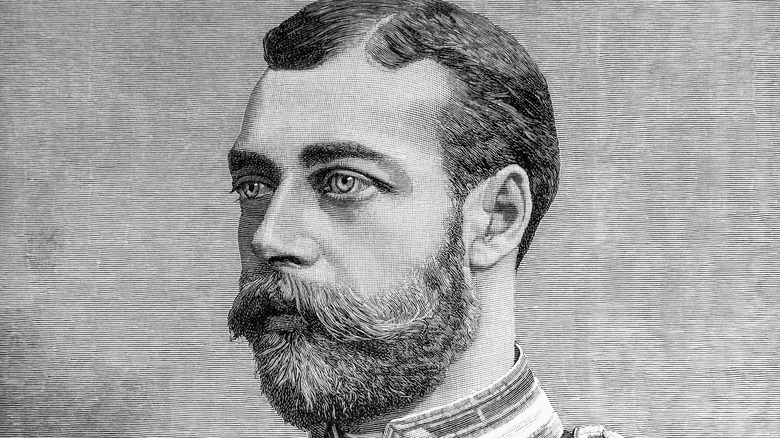12 Historical Figures Who Died Strangely
If there's one thing history has taught us, it's that no matter how important, famous, or wealthy you are, in the end you're still going to die. But all deaths are not created equal. Sure, dying of old age or from illness might be fine for boring, normal people, but famous historical figures deserve more ... interesting deaths. And some, like the following, definitely got them.
From a Viking ruler done in by the severed head of his rival to a Greek lawmaker who was literally smothered with affection, here are 12 historical figures whose lives came to bizarre ends.
Harry Houdini
The most famous illusionist in American history, Harry Houdini is best known as an escape artist. But back in the day, he was also known for having an iron stomach, which he claimed could withstand any blow. Unfortunately, his fans didn't realize the trick required preparation. Before a show in Montreal on October 22, 1926, a college student visited Houdini backstage and decided to test the truth of his claims by suddenly — and repeatedly — slugging him in the midsection as hard as he could. Houdini, taken off-guard by the attack, wasn't able to defend himself. (It probably didn't help that the magician was lying on a couch at the time, having fractured his ankle during a performance in Albany, New York, a few days earlier.) According to History, he suffered a ruptured appendix and underwent surgery in Detroit, but it was too late. Houdini died less than ten days after the Montreal incident, on Halloween night.
Tycho Brahe
Tycho Brahe was one of the most important and influential astronomers of all time, thanks to his groundbreaking work measuring the stars and planets and furthering our understanding of the solar system, per Britannica. He was also famous for wearing a metal nose to cover a disfiguring injury suffered during a duel. You'd think that would be quirky enough, but Brahe gained a stranger level of fame when he died because he didn't want to go to the bathroom. In October of 1601, while attending a royal banquet, Brahe found himself desperately in need of a potty break. But he didn't want to cause a breach of etiquette by getting up to use the can, so instead he just sat there until his bladder burst. According to Live Science, the subsequent infection killed him.
Later historians, boggled by such a crazy death, tried to come up with more plausible theories, like maybe he was actually poisoned by Johannes Kepler, who worked as Brahe's assistant. But just a couple years ago, scientists proved once and for all that it was pee, not mercury, that killed Brahe (per Live Science). When you've got to go, you've got to go, etiquette be damned.
Tennessee Williams
Thomas "Tennessee" Williams is one of the most famous playwrights in history, winning worldwide acclaim and Pulitzer Prizes for his 1947 play "A Streetcar Named Desire" and 1955's "Cat on a Hot Tin Roof," according to Britannica. He also suffered one of the most unusual deaths on record in 1983, at the age of 71, when he suffocated in his New York City hotel suite after getting a bottle cap stuck in his throat (per The New York Times). Williams, who had suffered from alcohol and drug issues for decades, was apparently trying to chomp down some barbiturates when he accidentally swallowed the bottle cap instead. It got lodged in his throat and cut off his airway, killing him.
Draco
When you hear the name Draco, your mind probably autocompletes "Malfoy." But back in ancient Greece, there was a real guy named Draco, who came up with a notoriously severe legal system for the city of Athens (per Britannica). According to the book "Rhetoric and the Law of Draco," his statutes essentially allowed the death penalty for even nonviolent crimes such as theft and adultery. He was so successful, his name became an adjective in English: draconian.
And the people of Athens loved him for his innovations. In fact, they reportedly loved him to literal death. See, it was traditional in Athenian culture to show your appreciation by throwing your hats or cloaks at someone. One night at the theater, Draco's supporters were so overwhelmed with love that they literally buried him in clothes. According to Ancient Origins, legend has it that they threw so many hats and cloaks on him, he suffocated beneath them. Yikes.
Clement Vallandigham
Clement Vallandigham was a lawyer and politician during the Civil War. Fiercely pro-Southern, Vallandigham was court-martialed by the Union Army, and he ran for governor of Ohio while living in exile in Canada, per Britannica. All of that became a footnote, though, when he suffered one of the most ironic deaths of all time in 1871. While arguing a case, Vallandigham attempted to prove that the victim had accidentally shot himself, so he decided to re-enact the scene. You can guess what happened next: According to the BBC, Vallandigham proved his case, all right, by accidentally shooting and killing himself in the exact same way the victim had!
Crazier still, just a couple days later, another person accidentally shot and killed himself while attempting to demonstrate how Vallandigham had accidentally shot and killed himself. The moral? Be very, very careful telling your friends about this story, and make 1000% sure the gun is empty when you do.
Sigurd the Mighty
According to "The Mammoth Book of British Kings and Queens," Sigurd Eysteinsson was one of the Viking leaders in the conquest of Scotland, reigning over Orkney for nearly 20 years with an iron hand and a steel sword. Immortalized in the Heimskringla and Orkneyinga sagas as Sigurd the Mighty, there's no doubting his ability on the battlefield (per the Orkney history site Orkneyjar). But he was also a cheater, and the gods don't like cheaters. After agreeing to a 40 vs. 40 battle against the rival leader Maelbrigte, Sigurd actually showed up with 80 men and massacred his hapless foe (via the book "Orkneyinga Saga: The History of the Earls of Orkney"). Apparently, he thought it was a 40 + 40 battle. Sigurd then beheaded Maelbrigte and strapped the head to his saddle as a trophy.
On the ride home, though, Sigurd scratched his leg on the severed head's teeth — the scratch became infected, and Sigurd died. Should have played fair, Mr. Mighty!
Gouverneur Morris
Men, you might want to cover your eyes, because this is a painful one. It's fair to say that Gouverneur Morris holds a special and esteemed place in American history. A member of Congress during the American Revolution, Morris was a staunch ally of George Washington, and went on to help write the U.S. Constitution in 1787 (per Mount Vernon). In fact, per History, Morris is credited with shortening the original, rather clumsy preamble, which namechecked each state in the Union, to the considerably more elegant "We the People of the United States."
Unfortunately, this Founding Father died a needless and tragic death on November 6, 1816, following an attempt to clear a blockage in his urinary tract by inserting a whale bone into his urethra, according to History. Naturally, this resulted in massive internal injuries and a subsequent infection that he did not survive. Now, if you'll excuse us, we need to lie down and not think about that for the rest of our lives.
Grigori Rasputin
Grigori Rasputin's rise to the heights of Russian society around the turn of the 20th century was as unexpected as it was rapid. Revered by Russian nobility as a mystic holy man who claimed he could heal the sick — including, it seemed, the son and heir to Nicholas II, Aleksey Nikolayevich, who suffered from hemophilia — Rasputin was not your typically spartan religious figure. According to Britannica, even while he was a teenager the young man had earned himself a reputation for excess, in particular when it came to sex. In fact, Rasputin isn't even his real name: It was a Russian nickname meaning "debauched one." His birth name was actually Grigori Yefimovich Novykh.
Though he married at 19, Rasputin had developed his own creed during his teen years: that sexual activity brought him closer to God. He traveled to Greece and the Middle East as a penniless holy man, indulging himself and claiming to heal the sick in exchange for donations, food, and shelter. His supposedly miraculous powers eventually gave him incredible influence at the Russian court, even as his debauched lifestyle became a major scandal.
Though Rasputin retained the support of the imperial family, in 1916 a group of conservative conspirators banded together to kill the mystic. As reported in The Guardian, a memoir by one of the killers claims they first attempted to poison him with huge doses of cyanide, though he continued to drink the wine they had spiked without issue. The assassins then shot him, but once again, the attack wasn't enough to end Rasputin's life, and he turned on his attackers, who were supposedly forced to shoot him repeatedly before drowning him in a St. Petersburg river.
Kurt Gödel
Born on April 28, 1906, the Czech logician and mathematician Kurt Gödel had a seismic effect on thought in the 20th century and beyond. Per Plus Maths, Gödel first studied at the University of Vienna, where he began to establish himself as a thinker of unique genius as a member of the famous Vienna Circle of rationalists. His 1929 doctoral dissertation, "The Completeness of the Axioms of the First-Order Functional Calculus," catapulted him to international academic fame, after which he became known for his "Incompleteness Theorem," which states that "undecidable" statements — which, per Plus Maths, would be the mathematical equivalent of "this statement is unprovable" — exist in mathematics. His work was a major shock to experts at the time and is still highly influential.
Tragically, Gödel's personal life was hampered by mental health issues, which materialized in the form of hypochondria and paranoia around food, which he often suspected of being poisoned. In his later years, the mathematician relied on his wife, Adele — a former dancer whom he had met as a student — to allay his fears by preparing his food or acting as his food taster. However, when Adele was hospitalized following a stroke in 1977, Gödel was left vulnerable and unwilling to eat. He died of self-imposed starvation on January 14, 1978.
Sir Francis Bacon
Sir Francis Bacon (January 22, 1561 — April 9, 1626) was one of the most respected and influential Britons of his time, who made his name in several spheres of public life.
As noted by Britannica, Bacon's early life was dominated by a stellar career in law. But with a restless mind and boundless ambition, Bacon also began occupying his time with the writing of philosophical works and in building a political career, though his occasional disagreements with Queen Elizabeth I held him back in achieving his goals. Nevertheless, by middle age, Bacon had been rehabilitated under the new King James I, and eventually worked his way to the role of Lord Chancellor of England in 1618.
But like many wealthy men of his day, Bacon was also concerned with scientific investigation, and in 1626 he conducted an experiment that would ultimately lead to his death. As described by Catherine Drinker Bowen in her 1963 biography "Francis Bacon: The Temper of a Man," one snowy day Bacon was traveling by coach when his mind turned to an idea that intrigued him: that through chilling food at freezing temperatures, it might be preserved and eaten at a later date. Bacon and his companions stopped by a nearby farm, bought a chicken, and stuffed the bird with snow and ice to see if his theory was correct. However, Bacon caught a chill during his exertions, from which he never recovered. He died several days later.
Edgar Allan Poe
Edgar Allan Poe (January 19, 1809 — October 7, 1849) was already a famous figure in the world of American letters during his short lifetime, having made his reputation as both a creative writer and critic. In the final year of his life, he was busy conducting a lecture tour of the United States to raise funds for The Stylus, a literary magazine he had long dreamed of launching, according to the Edgar Allan Poe Society.
However, things fell apart in September when Poe went missing following a journey to Baltimore, with reports from various people who claimed to have met Poe during this time alleging that he was drunk, perhaps using the funds he had raised for his magazine to finance a non-stop drinking spree. On October 3, Poe resurfaced, with a printer at the time describing him in a letter as "rather the worse for wear" and in "great distress." According to Smithsonian Magazine, Poe had been discovered outside a public house, lying delirious in the gutter, wearing someone else's clothes. He died four days later, plagued by hallucinations and repeating the name of an unknown person: Reynolds.
Poe's death was vaguely described as resulting from "congestion of the brain," according to the Edgar Allan Poe Society, but in the many decades since, countless theories have emerged as to the real cause. Some have speculated that Poe was beaten in a fight, or that he simply drank himself to death. More recently, however, experts have claimed that alcohol may not have underpinned Poe's death at all, and that he may have died of rabies (via The New York Times).
King George V
King George V of the United Kingdom (June 3, 1865 — January 20, 1936) — the grandfather of Queen Elizabeth II — was a popular monarch who proved an effective figurehead during World War I. Over the course of a quarter century's reign, he modernized the royal family in a way that made it palatable to the wider working-class British citizenry.
As reported in The New York Times, his death at the age of 71 was described as "a peaceful ending at midnight" in a contemporaneous newspaper report. The king's death, which came after a long period of ill-health and with the monarch in a coma, was seemingly characterized as mercifully easy. However, in 1986, the same source revealed that rather than a natural death, King George V had been euthanized by his doctor using fatal amounts of morphine and cocaine, with the king's death timed so that it would be announced in the morning papers, rather than the evening ones.
When the unusual method of the king's death was revealed, The New York Times contacted Buckingham Palace in an attempt to gauge Queen Elizabeth II's reaction. A spokesperson told them: "”It happened a long time ago ... and all those concerned are now dead.”
